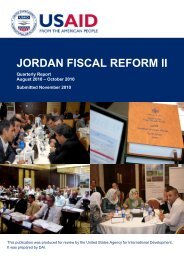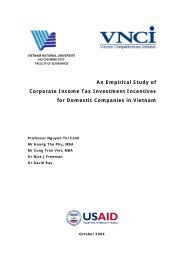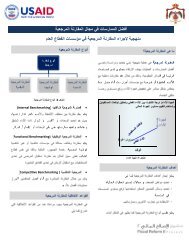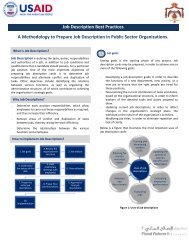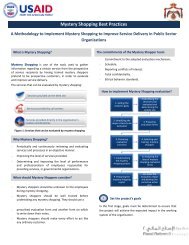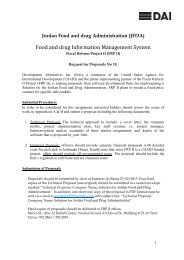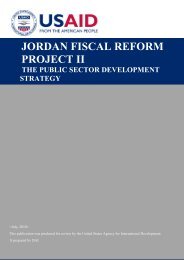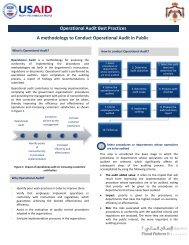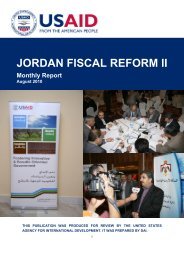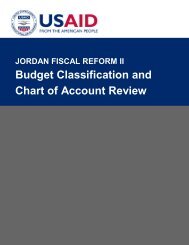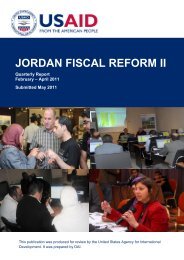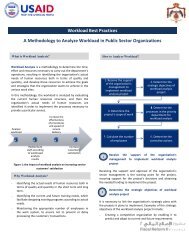Integrated Financial Management Information Systems: A ... - Frp2.org
Integrated Financial Management Information Systems: A ... - Frp2.org
Integrated Financial Management Information Systems: A ... - Frp2.org
You also want an ePaper? Increase the reach of your titles
YUMPU automatically turns print PDFs into web optimized ePapers that Google loves.
PART 3: BEST PRACTICES<br />
This section offers a series of good or best practice steps to successful IFMIS implementation,<br />
drawing on the country cases cited above, as well as conventional wisdom on the topic. Of course,<br />
“best practices” should be taken with a grain of salt. There are few hard and firm rules, for the<br />
situation and the requirements vary from country to country. Nevertheless, the following steps seem<br />
to be helpful in ensuring successful implementation of IFMIS projects.<br />
STEP 1 – THE NEEDS ASSESSMENT<br />
The first step in any institutional reform project is a needs assessment—not a “wish list,” but a serious<br />
and comprehensive assessment of the current institutional conditions, what is needed, and what can<br />
be reasonably achieved.<br />
A number of questions should be addressed:<br />
What are the political priorities of stakeholders?<br />
How does the current governance system function (the nature of the political system, the<br />
bureaucracy, the budget process, etc.)?<br />
What is the existing legal framework, and how does it function?<br />
Can the legal framework be used to support the public financial reform process?<br />
How does the current fiscal system work?<br />
What systems are in place?<br />
How is the information being used?<br />
What human capacity and technical know-how are available, both at the central and at<br />
subnational levels of government?<br />
In addition, the assessment team should collect and analyze past years’ spending budgets, planned<br />
and executed, going back as many years as possible. This is not always possible, in particular in postconflict<br />
settings such as Iraq, where historical information is extremely scarce and cooperation from<br />
counterparts at a minimum.<br />
The historical analysis is of great importance to the assessment process. Many developing countries<br />
have inherited systems left behind by past governments or in many cases colonial powers, each<br />
leaving its own distinctive trademarks and traits. On top of these systems, subsequent governments<br />
have superimposed changes to accommodate changing needs, priorities, and ideologies (socialist,<br />
communist, etc.). Consider Vietnam, for example, long colonized by France but also strongly<br />
influenced by its recent communist history. As a result, while Vietnam has a very strong central<br />
government, each of the 64 provinces has a strong government, too, thanks to its colonial experience.<br />
This creates a relatively inflexible system, with each administration having its own demands,<br />
requirements, laws, and internal structures. This is a major impediment to introducing a unified<br />
IFMIS for the country as a whole. In such a large structure, change comes very slowly.<br />
Implementation of an IFMIS on the proposed 4-6 year timeline is simply not feasible.<br />
24 INTEGRATED FINANCIAL MANAGEMENT INFORMATION SYSTEMS: A PRACTICAL GUIDE



